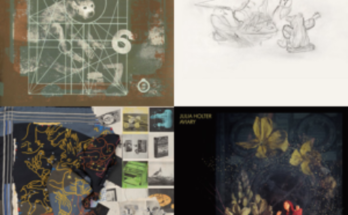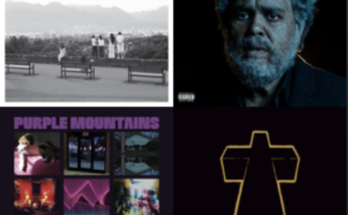The Arctic Monkeys began to blow up on the internet after the spreading of their first demo Beneath the Boardwalk. At that time, Alex Turner was still a teenager with a fresh face sprinkled with acne. His black hair fell down naturally over his forehead, not swished to the side like the chaps from Liverpool. His simple look when he stepped in front of his mike at packed clubs (blue jeans and a sweater) was the same way he dressed before the band got signed. That was 2005. Now in 2013, Turner showed up to the headlining slot at Glastonbury festival sporting slicked-back, greased hair and a fancy, black-and-white-striped blazer. This change in image seems to parallel the band’s change in musical influences. The no-BS approach where the Monkeys ran through their set without saying much has given way to Turner entertaining thousands in between songs. He has the poise of a rock star now, not the quiet personality on stage of an indie romantic.
This is not necessarily a bad thing. It’s not overly pretentious in a U2 or Oasis kind of way, where the band gets caught up in fame, believing they’re basically gods. For the Monkeys, they still are still the same drunken poets documenting the nightlife and its pitfalls, but now they are at a point where they want to try something new. The band’s fifth album, AM, is the group moving into territory they have never crossed into before. R&B background vocals, Hip hop beats, and hard rock riffs make this album seem much more inspired than their last effort on Suck it and See. The album is a well-focused, lyrically provoking (see: “Why’d You Only Call Me When You’re High), and a strong step forward for a band trying to stay relevant when their first record, Whatever People Say I Am, That’s What I’m Not, likely is unsurpassable.
The album gets off to a near perfect start with a crawling, Black Sabbath-esc riff that successfully evokes the same feeling that early material instilled in its listeners (wanting to take shots and go out) but at a much slower tempo. The guitar is loaded with fuzz and distortion, which contrasts with the clean-toned multitude of bar chords that circulated on the first couple albums whilst Turner spat phrases out like an auctioneer. The album has balance though. The band sheds the gritty sound of the opening tracks and moves into songs like “No. 1 Party Anthem” and “Mad Sounds.” The former has a dream-like guitar echoing in the chorus paired with a piano. The latter features a quiet guitar that had to have been influenced by the Velvet Underground’s “Pale Blue Eyes.” When the song gets going, an organ comes in just before the band breaks into a feel-good hook that takes them to the end of the song. But it’s not just a hook in that it’s catchy, it is a strong melody altogether.
The album ends with a vocal contribution on the song “Knee Socks” by Josh Homme, who produced the album Humbug for the band. Then the album ends with Turner singing poetry borrowed from the UK punk rocker John Cooper Clarke. It’s a sweet love song that serves as a fitting close to Turner’s disillusionment with the nightlife. He’s a romantic walking in a world and city (the bands new home in Los Angeles) that has been sapped of it.
“I wanna be your vacuum cleaner, Breathing in your dust. I wanna be your Ford Cortina, I will never rust”
Rating: WPG
RIYL: The Strokes, Franz Ferdinand, The Libertines




